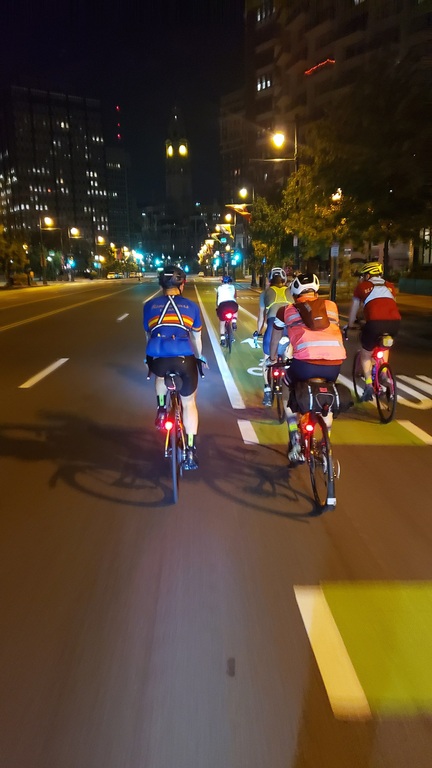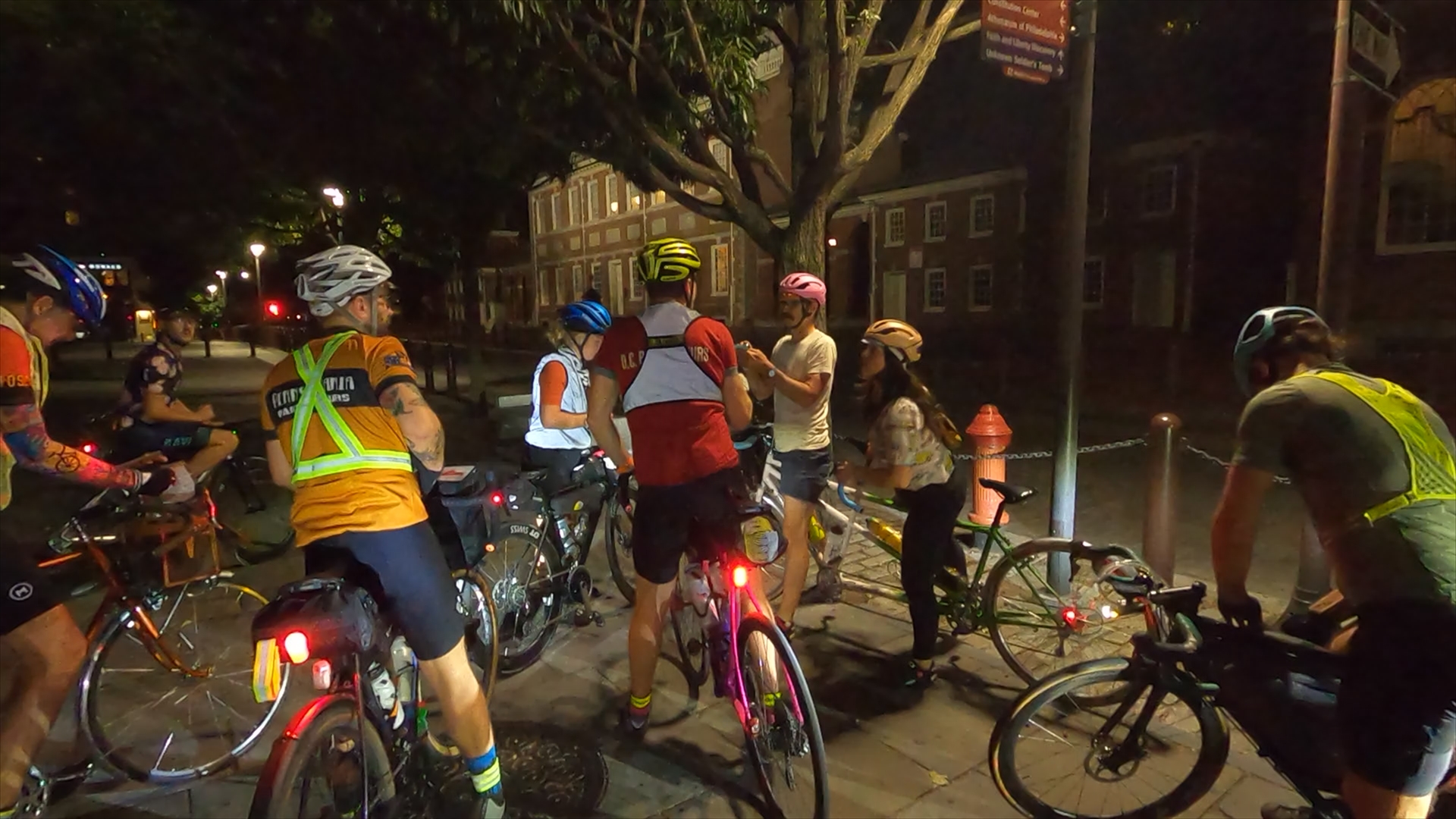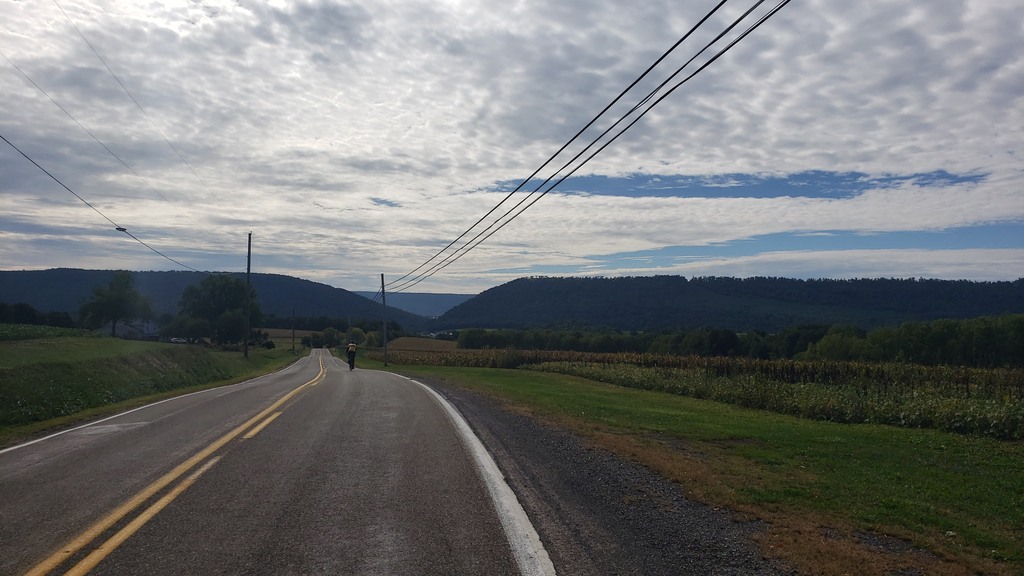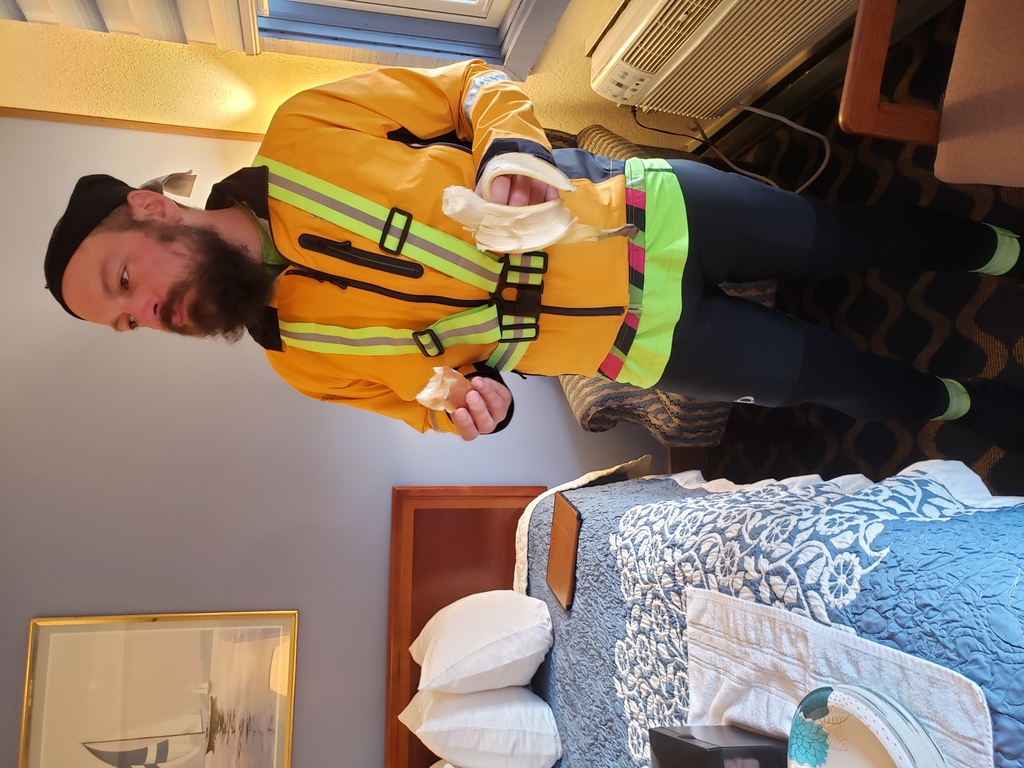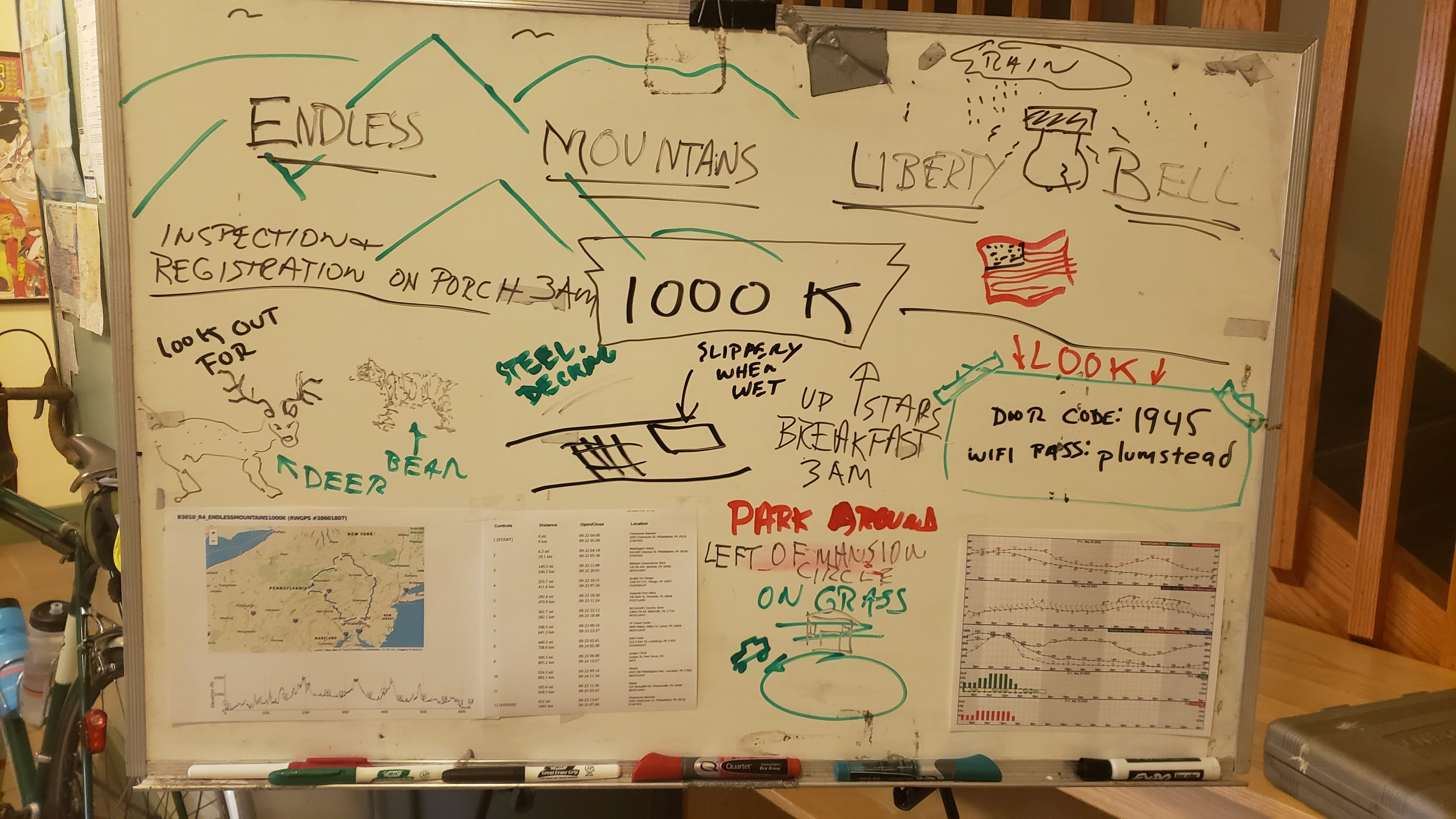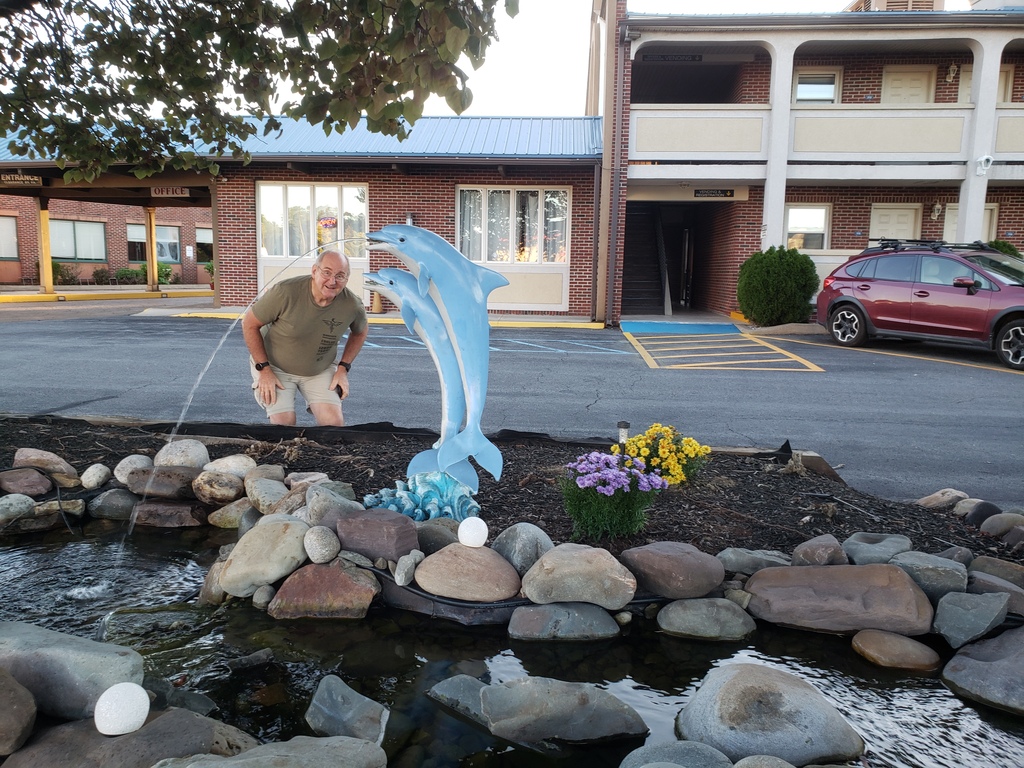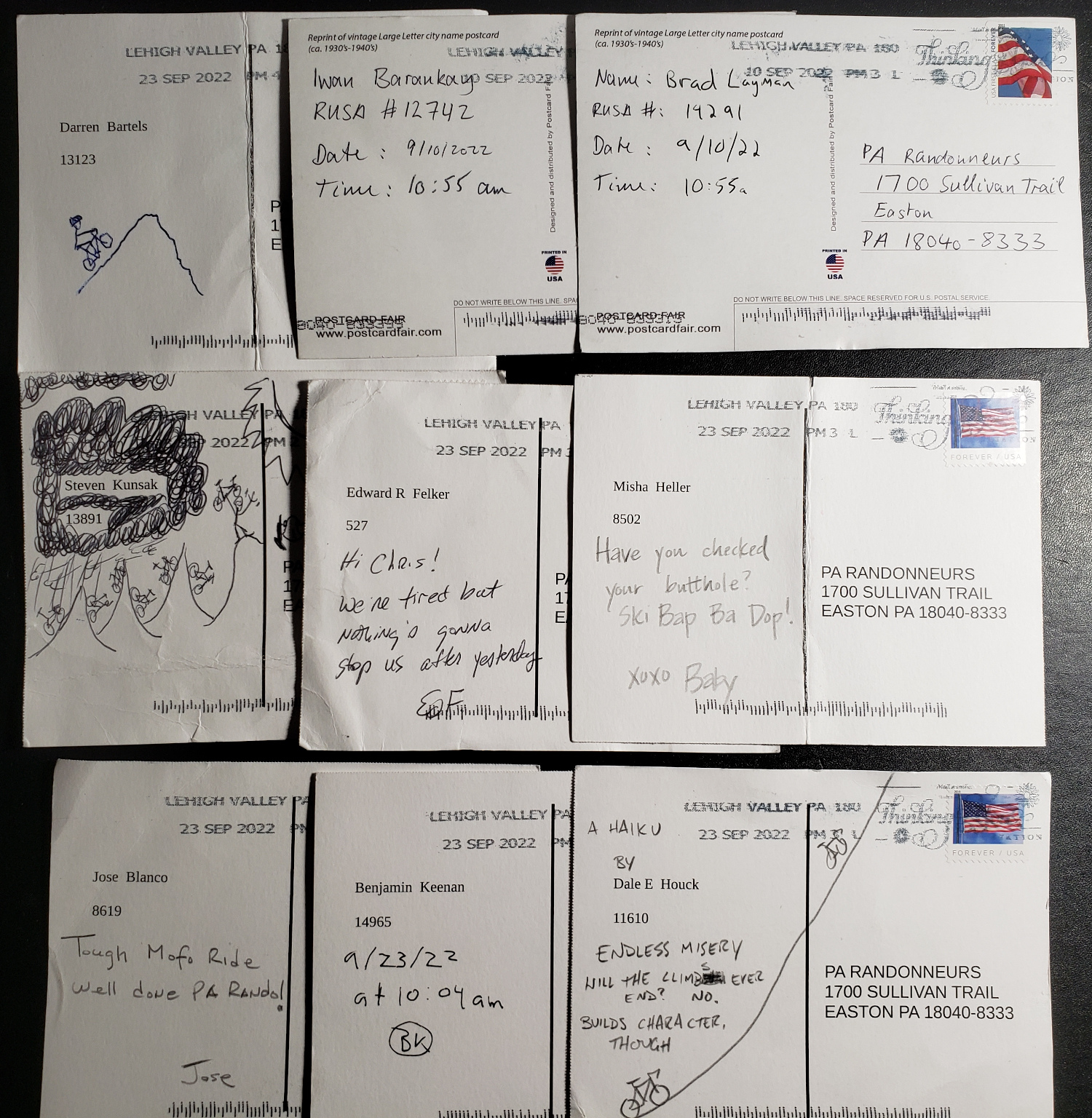UPDATE 2****
At 255.7 the cue mentions the wrong hotel name. The correct hotel for the overnight in Owego, NY is given on the brevet card and the main cue. It's the “Quality Inn”. There are other hotels nearby, so please make sure you go to the Quality Inn in Owego for your overnight. A bed will be waiting.
We have corrected this error and updated the cue sheet to version 12. As there have been no changes to the route itself other than cue note text, it's not necessary to re-download the RWGPS data if you only use the GPS data for turn navigation.
In summary, at 115.5 you will need to climb past barriers to proceed on the closed NPS615/Flatbrook Rd, at 255.7 the correct hotel is the Quality Inn. And look out for wildlife.
UPDATE 1****
At mile 115.5, at the bottom of the the steep descent of Old Mine Rd, there is a T right onto National Park Service Road 615 (Walpack Flatbrook Road). This road is closed with concrete barriers because of some debris. It seems that riders can just squeeze past those barriers and keep riding with caution, alert for debris and other road problems. Preriders report that the debris on the closed road is easily avoided by bikes (no so much for cars). Since the option to ride NPS615 is viable, there is no change in the cue sheet or GPS route.
If you do not want to squeeze past the barriers and ride the closed section of NPS615, you could conceivably detour T-left back at mile 115.5, follow Old Mine Rd and end up back on course eventually as Old Mine merges back into NPS 615 after the blockage. That detour adds some climbs and bonus miles.
The preriders reported that there is considerable wildlife on the course, especially day 1 and day 2. There are always a lot of deer, as deer are forest "edge" creatures that like to hang out along roads. If you see one deer crossing the road, slow down. There might be another.
You also have a good chance of seeing black bear. The forests near Old Mine Rd have a large population of this species. They are not typically aggressive or dangerous.
If you encounter a bear, this is what PA DCNR says you should do:
Alert the bear — If you see a bear, make some noise
to alert the bear of your presence, giving it ample time and space to
turn and leave. Avoid being caught up in the excitement of seeing a bear
and inadvertently letting the bear get too close before surprising it.
Get back — If you have a close encounter, back away
slowly while facing the bear so you always know where the bear is and
how its reacting. Wild bears rarely attack people. Slowly backing away
diffuses the situation and gives the bear room to flee.
Stay calm — encountering a bear can be startling,
but try to remain calm. While moving away, avoid sudden movements and
talk to help the bear keep track of your retreat. Don’t turn and run or
attempt to climb a tree. Running may prompt the bear to give chase, and
climbing a tree could be interpreted as a threat to any cubs that are
present since cubs often climb trees when startled.
Pay attention — Bears will use all of their senses
to figure out what you are. If they recognize you as a person, some may
stand upright or move closer in their efforts to detect odors in the air
currents. Don't consider this a sign of aggression. Once a bear
identifies you, it will usually leave. If it begins to slowly approach
you, face the bear, wave your arms wildly and shout while continuing to
back away. The idea is to intimidate the bear into retreating. Swing a
stick, or whatever is handy, if the bear gets close.
If
suddenly surprised, some bears may feel threatened and give warning
signs that they are uncomfortable. They may clack their jaws together or
sway their head; those are signs for you to leave. Some bears have been
known to charge to within a few feet when threatened. If this occurs,
wave your arms wildly and shout at the bear.
Fight back — Black bear attacks are extremely rare.
If a black bear attacks, fight back. Bears have been driven away when
people have fought back with rocks, sticks, binoculars and even their
bare hands.
Original Post ***
A pre-ride of the Endless Mountains Liberty Bell 1000K was conducted on September 9, by Iwan Barankay and Brad Layman.
Based on this pre-ride the RWGPS route was updated 2022-09-15 11:26:19 EDT and the cue sheet is now version 11. All information is on the event web page.
Some GPS units may not have enough memory to swallow the full route. For the convenience of those who have such units, the course has been broken into three segments: day 1, day2, and day3. I strongly suggest that you load these three segments into your GPS unit (and check them by starting to nav with them) unless you are 100% sure your unit can handle the whole route. Some GPS gadgets don't complain when the route is downloaded -- but choke when you actually try to nav with the route. Please test thoroughly before you start riding.
Also, we REQUIRE that you read through the cue sheet in advance, and carry a copy of the cue sheet with you during the ride, even if you intend to use GPS for navigation. The cue sheet is a fool-proof navigation backup. Also, it contains important safety warnings and suggestions for replenishment stops. You MUST read it and we strongly suggest you refer to it often during the ride so you aren't surprised by a hazard or miss an important rest stop. The latest cue sheet can be downloaded from here in landscape or portrait PDF, or CSV suitable for custom reformatting. Please print a copy of the cues in your favorite format and have it with you at the start. We will check that you have a cue sheet at bike inspection.
I wish all of you bon courage for attempting this difficult 1000K brevet. My experience says that if you can somehow get to the first overnight, and then get back on the bike to ride again day 2, you will complete the event without trouble. No matter how bad you feel going into the first overnight, really, really, really try to continue. Once you start riding again after some sleep, you will feel considerably better and I promise your confidence will return. Bonne route!
--
Chris Nadovich
Eastern PA RBA designate
Course Notes
The following course notes were compiled by Iwan Barankay...
Following sections of the original
famed Endless Mountains brevet of the past,
this edition is starting and finishing in Philadelphia and is
“shortened” to 1000km.
The EMLB1000K is a challenging route. Period.
When a brevet is challenging it means something different compared to
a challenging Café ride. It implies more forethought, planning, and
better pacing. We have written some safety suggestions based on our pre-ride experience and posted them at the end. Ignore them at your peril.
A general note is that construction can
spring up at any time especially in the initial and final miles as
you ride in and out of Philadelphia. We have placed notes of
constructions into the cue sheet but there can always be more. Another general note is concerning
bridges. Bridges are slippery, they can have ruts where your wheel
can get stuck in or they are dangerous in some other creative way.
Please take your time over each and every bridge.
There are multiple gravel sections and
the roads can be rough. 28mm or higher tire widths are recommended.
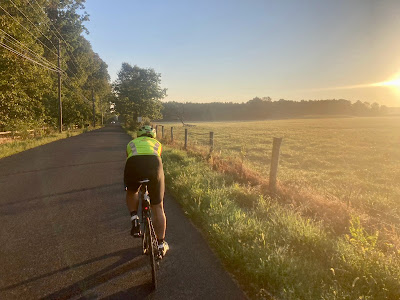
Day 1
The start is at Chamounix Mansions near
the center of Philadelphia up on a hill surrounded by horse stables
and a park. A very iconic place. As you roll out from the start you
might notice some cars parked along the road with occupants doing, I
guess, NYT cross-word puzzles.
Philadelphia is dark and quiet at 4am
so you get to enjoy riding along some major boulevards without the
noise and stress of traffic. Enjoy the tour of the city’s major
sights.
Leaving Philadelphia takes you through
easy routes along the Schuylkill River Trail and then through the
Northern suburbs.
After you cross the Delaware you enter
Hunterdon County. Milford is a good stop for a second breakfast
either at the convenience store after the bridge or even better just
a little further along the road on the left is the Bagel shop where
we stopped for breakfast.

Next come some short climbs, reliably
getting the steepest just before the summit on Butler Road (79.8),
Buttermilk Bridge Road (82.5 and 82.9), Brass Castle Road (87.1 and
88.9).
It is imperative to refuel at the Dales
Market in Blairstown (105.9 - Valero near it has restrooms accessible
from the outside) as there is a serious climb afterwards plus a long
stretch with no services except for water at 114.1 until the Shohala
control (149.3).
After Shohala you ride along the
gorgeous Lackawaxen river then refuel again at the Turkey Hill in
Honesdale (177.8m). There are many challenging climbs on this route
but perhaps the most challenging comes after mile 201 where Old
Newburg Tpk becomes a steep dirt road that does not seem to end. One
of us unclipped and walked the steepest section of this climb. No
shame in that. After that climb the final 40miles along the
Susquehanna River to the first overnight are quite easy. Food,
drinks, and a room will be ready for you!
Day 2
The route continues along the Susquehanna
River but you might not get to see it as this section features long
barrier walls to prevent flooding. (Some communities did not want the
walls and chose to keep getting flooded instead. Sigh.)
There is a postcard control in Towanda
(292.6) and opposite of it is a Dandy Mart with a sandwich counter
and a nice staff. Note: Behind it down by the river is a very nice
and quiet picnic shelter. We had a wonderful lunch stop complete with
powernap there.
The climb after Canton (318) is long
but not that hard considering. McConnell’s Country Store (control
at mile 361) makes great burgers on delicious toasted Kaiser rolls.
The challenging climb of the day is up Bull Run Road (413.8) before a
long descent to the overnight control. Be careful on the stretch to
the control as it is a lively road. Make use of the wide shoulder.
Our charming and attractive volunteers await you at the Hotel in
Lewisburg for the second overnight.
Day 3
The third day is the easiest in many ways. Services
and food options become more frequent and you get to enjoy rolling
hills where with some luck you can build up enough momentum on the
downhills to go up most of the next hills. You get to practice that
maneuver some thirty times (actually we lost count) This is perhaps
the section with the best views!
The section after the Smoketown control
east of Lancaster (554) is a little challenging as it is busy with
lots of horse poop on the shoulder. Be careful when drinking from
your bottles. After that comes another stunning section towards
Phoenixville followed by the Schuylkill River Trail. The moon will
have set by the time you reach it and the trail will be pitch black!
We rode two abreast to illuminate the path and we encountered a lot
of branches, animals, and walkers appearing out of the dark. Always
be prepared to stop.
Entering into Philadelphia is a bit of
a shock with lively traffic and absent minded (mindless?) drivers.
One last push up a hill and you will be back to where you started two
days ago at the Chamounix Mansion.
Safety Notes
***Don’t skip reading this
section.***
This is not a race.
Use lights and reflective
equipment as soon as visibility is poor.
Take extra care on each and every
bridge.

Stop at all stop signs and look
left and right twice to better judge the speed of oncoming
traffic.
At any intersection assume that
none of the drivers have noticed or seen you.
Ride single file on busy roads.
Don’t text and ride. You can
text much better and faster when stopped preferably at the control:
I timed it. We want to avoid any accidents related to distracted
riding.
If you are sleepy pull over to
drink, eat, have caffeine, take a nap etc. Do not risk falling
asleep when cycling.
When you need to stop get off the
road.
If you are in trouble, try rolling
into the next control. Call or text us at the number on the brevet
card. Don’t just vanish. We worry about you, and we want you to
have a successful event.
Sleep
The night before the event will be
short with crappy sleep. That is an empirical fact. Make sure to get
as much sleep as possible the week leading up to the event. Starting
September 15 or thereabouts stop drinking afternoon coffee/tea and
don’t drink (too much) in the evenings so you have proper and
high-quality sleep. This will make the event a much more enjoyable
experience!
Check your bike
You need to give your bike a good look
especially the brakes. Many of you either did a lot of long routes
this year already or none. In either case double-check the bike.
Consider getting fresh brake pads, cables and deal with the spongy
feeling of your hydraulic brakes by bleeding them. There are many
descends with twists and steep sections. This is not a race so take
it easy on the downhills to avoid mishaps like on the Coulee
Challenge where a rider somersaulted over a side-railing when coming
too hot into a corner.
Lighting
Lighting and reflective gear are
particularly important on this route as you will have considerable
night-riding. You know the drill: lights front and rear, reflective
vests, and ankle straps are a must. For this ride we REQUIRE TWO
rear and front lights. The second light can be a backup of lesser quality than the main lights, but you MUST have a backup for both head and tail. Lights should be afixed to the bike directly, not clipped to a webbing loop on a bag.

Day one starts at 4am. Sunrise is at
6:25am and sunset is at 7:35pm. There will 255m and a little over
18,000ft of climbing on day one but the hills are front loaded and
the last 40m are downhill and relatively flat. In any case the
predicted arrival will be at 2am -1/+3h (!) so your lighting must
last 10-13 hours on day one alone. Of course, if you have a dynamo,
you are in great shape, but you still must bring back-up lights in case
that dyno fails – as it did for PA SR rider Amy Lippe half-way during
her Transcontinental Race across Europe this year.
On the pre-ride I had two battery run
front lights on my handlebars and three rear lights, of which two
were fixed to the frame and one to the helmet. If you are in the
market for battery run lights, there has been a productive discussion
about it on the RUSA discussion board here.
A good model is the Fenix
BC26R ($90) as it has a 5000mAh battery and will last a long
time. A good alternative, of which I have two, is the Light
& Motion Rando 500 ($72). It also has a large battery plus it
can be run on low whilst charging at the same time.
Also consider the benefits of a USB
power bank not just as a fail-safe but as a great way to save time:
it allows you to charge your lights and any other devices whilst
riding. I like to charge up my lights and phone on the ride so I
reach the overnight fully charged leaving me with just the battery to
charge. This does away with hunting for outlets and dealing with all
your devices at the end and at the beginning of each ride saving you
about 20-30minutes (believe me I timed riders with rando-brains
trying to understand how electricity works). Anker makes good
quality USB power banks like this $26
Micro-USB 10000mAh (180 g / 6.3 oz) or this one with
fast-charging
USB-C ($43).
Supplies
We highlighted available gas stations,
shops, and cafes along the route. You see them at good intervals but
there is about a 40m stretch on day one without anything other than a
public restroom with water. We will serve breakfast and dinner at the
start/finish and the overnights and will be stationed at some secret
controls and can provide some water but make sure to plan to get
resupplied at the controls and stores. Self-sufficiency is paramount.
Make sure you have all the tools to
retighten each screw and bolt and restock your repair kits. In case
you installed something new on your bike double-check you have the
tool for it on your multitool. A common trick is to wrap some
electric tape around the pump or CO2 cartridge: it will come in handy
for something or someone at some point.

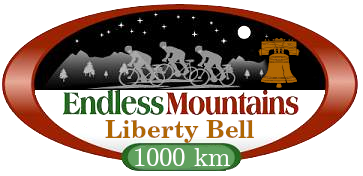 Out
of 13 starters, nine extraordinarily tough randonneurs braved
mountains, wind, cold, rain, and moonless nights to finish the Endless
Mountains Liberty Bell 1000K. In fact, they crushed it -- or rather they
CRACKED the EM Liberty Bell with sub-70 times. It's an amazing
achievement to finish this event, but to finish sub-70 hours surpasses
amazing. Chapeau to these tough nine. Bravo!
Out
of 13 starters, nine extraordinarily tough randonneurs braved
mountains, wind, cold, rain, and moonless nights to finish the Endless
Mountains Liberty Bell 1000K. In fact, they crushed it -- or rather they
CRACKED the EM Liberty Bell with sub-70 times. It's an amazing
achievement to finish this event, but to finish sub-70 hours surpasses
amazing. Chapeau to these tough nine. Bravo!